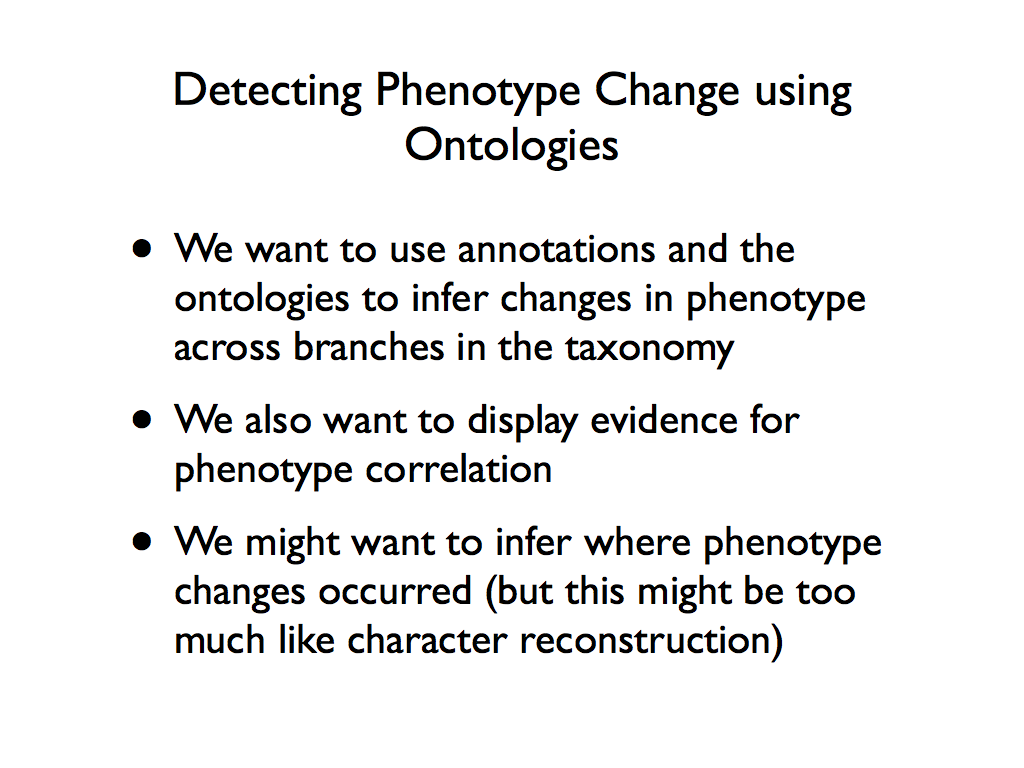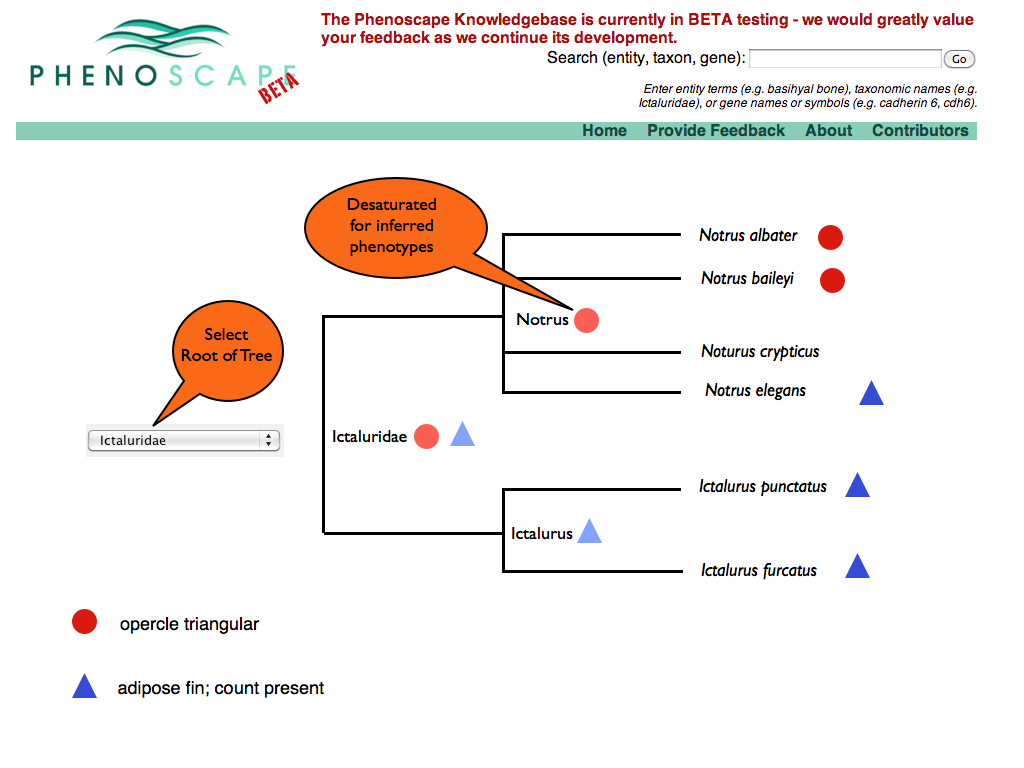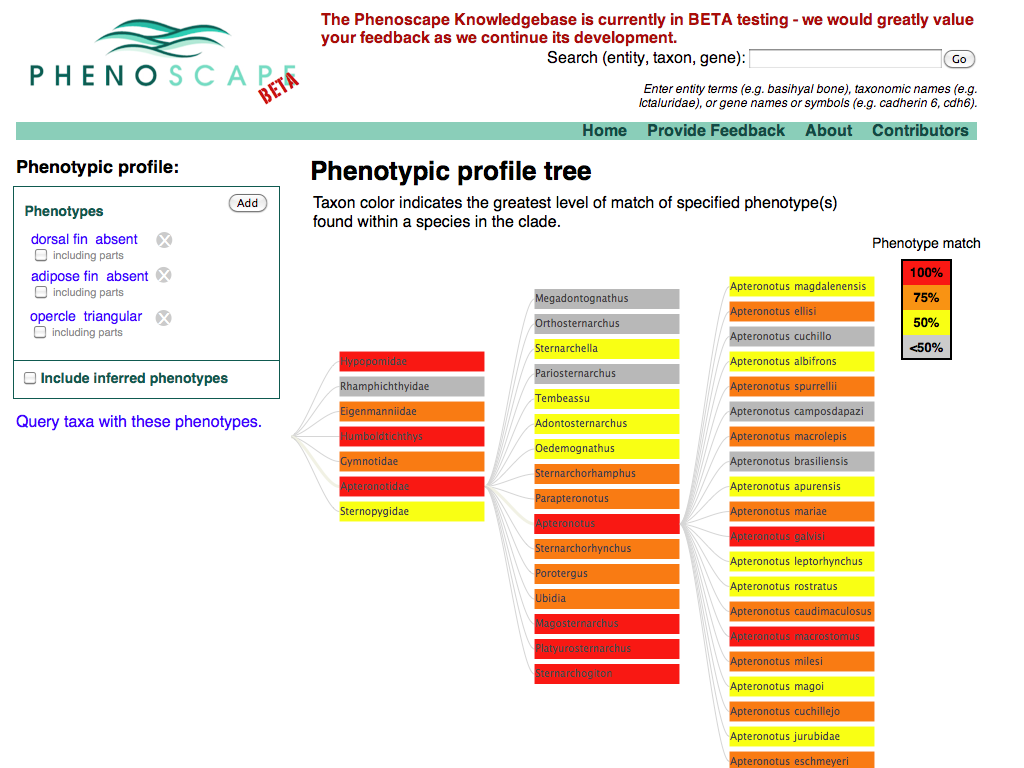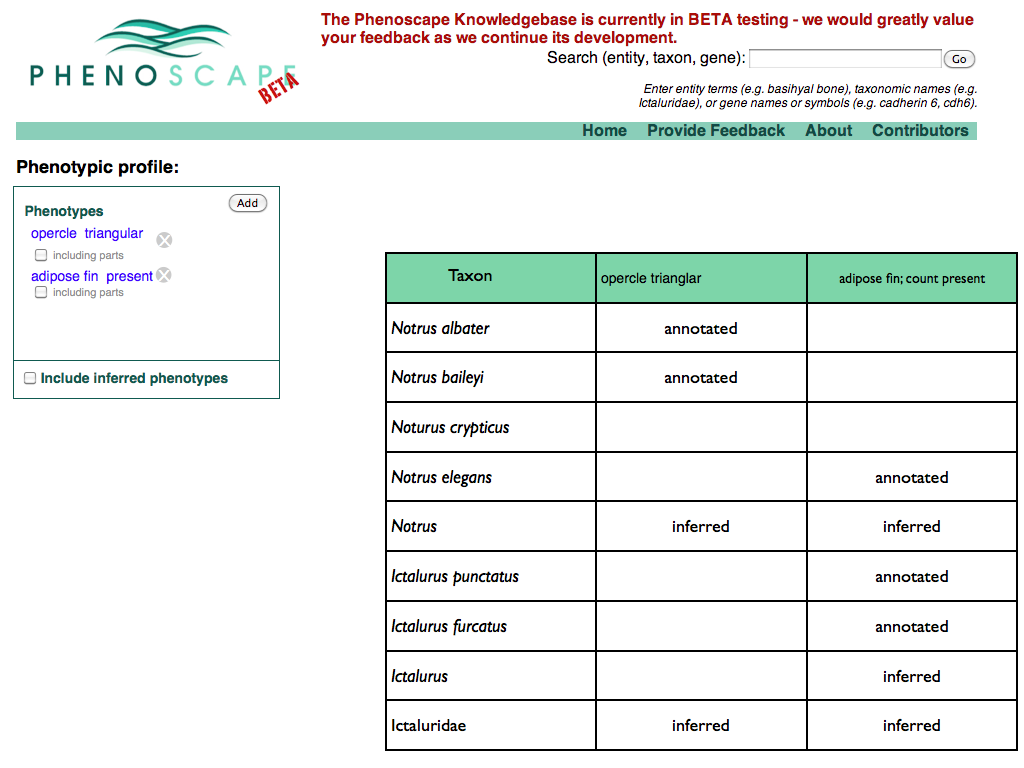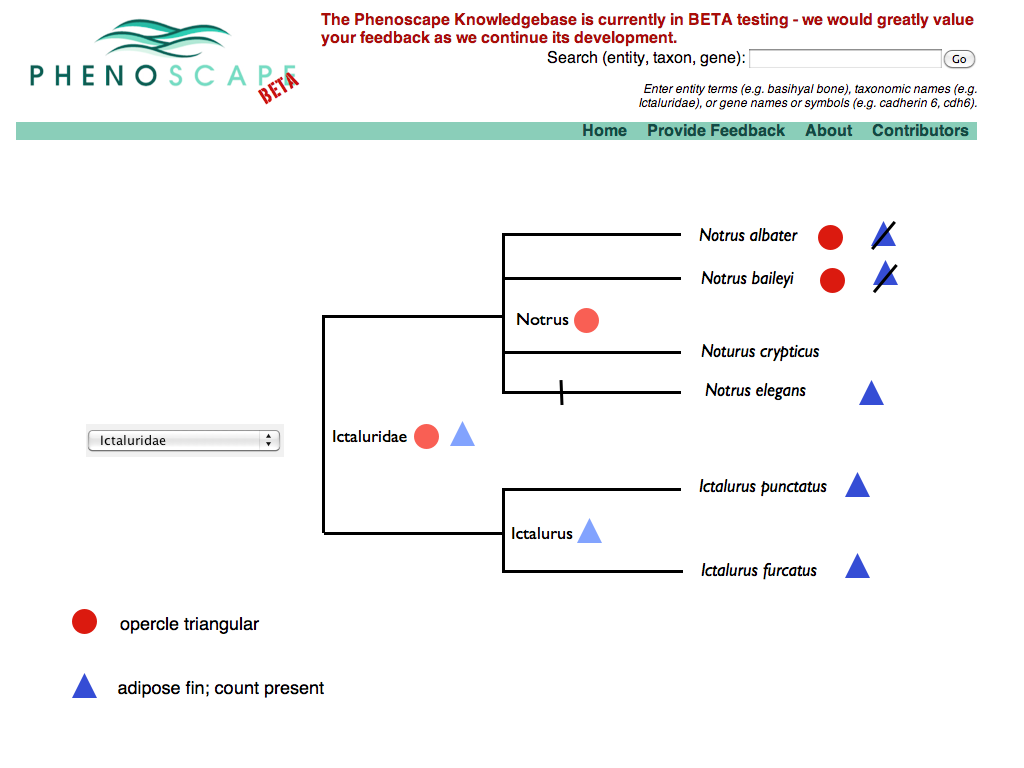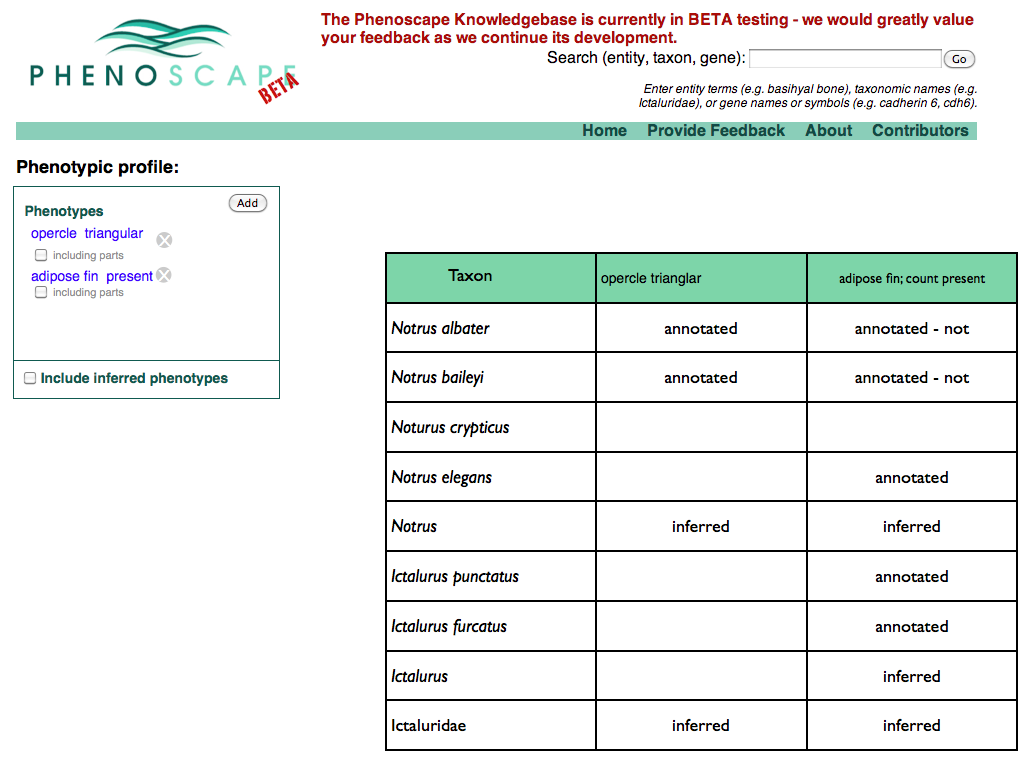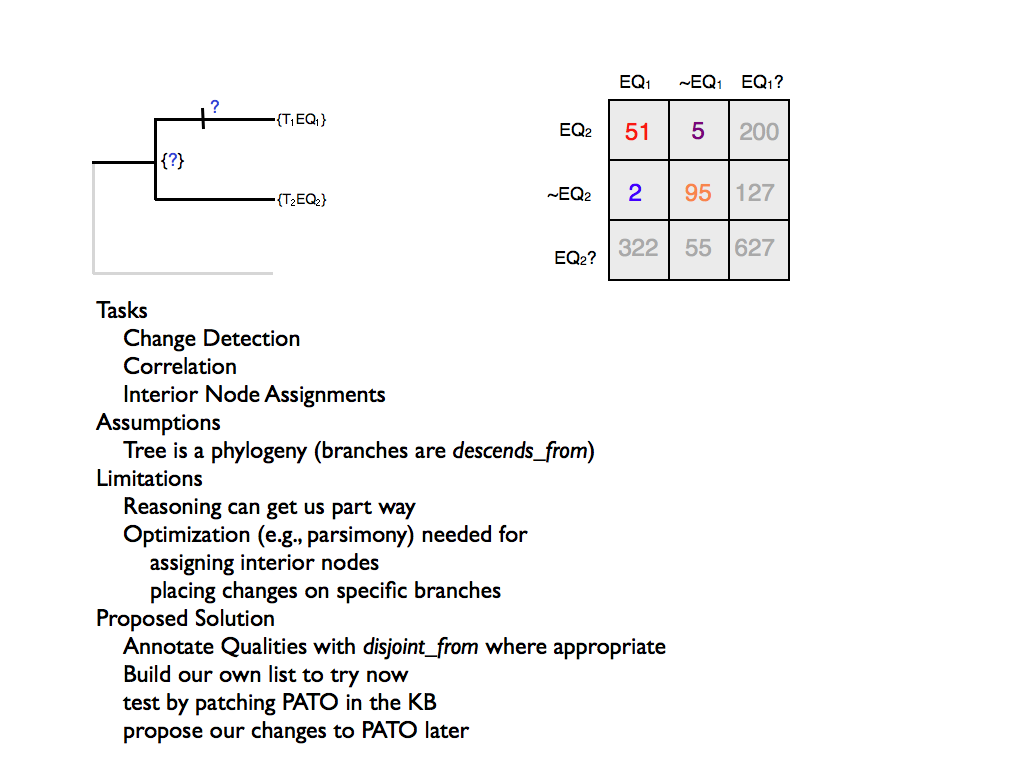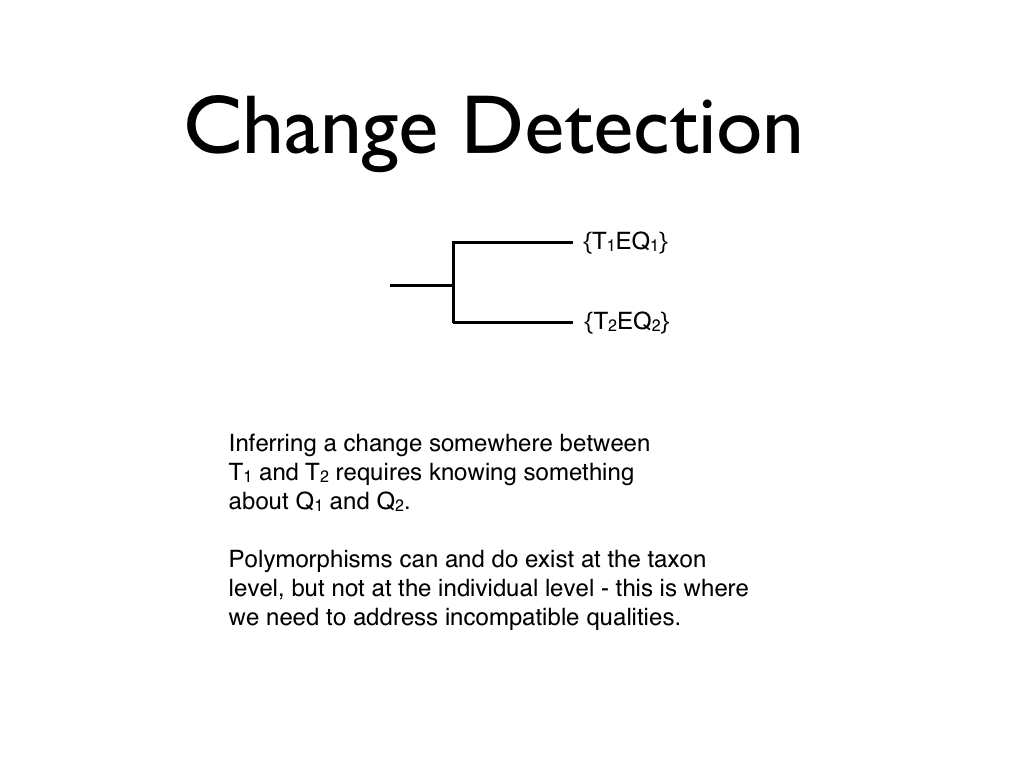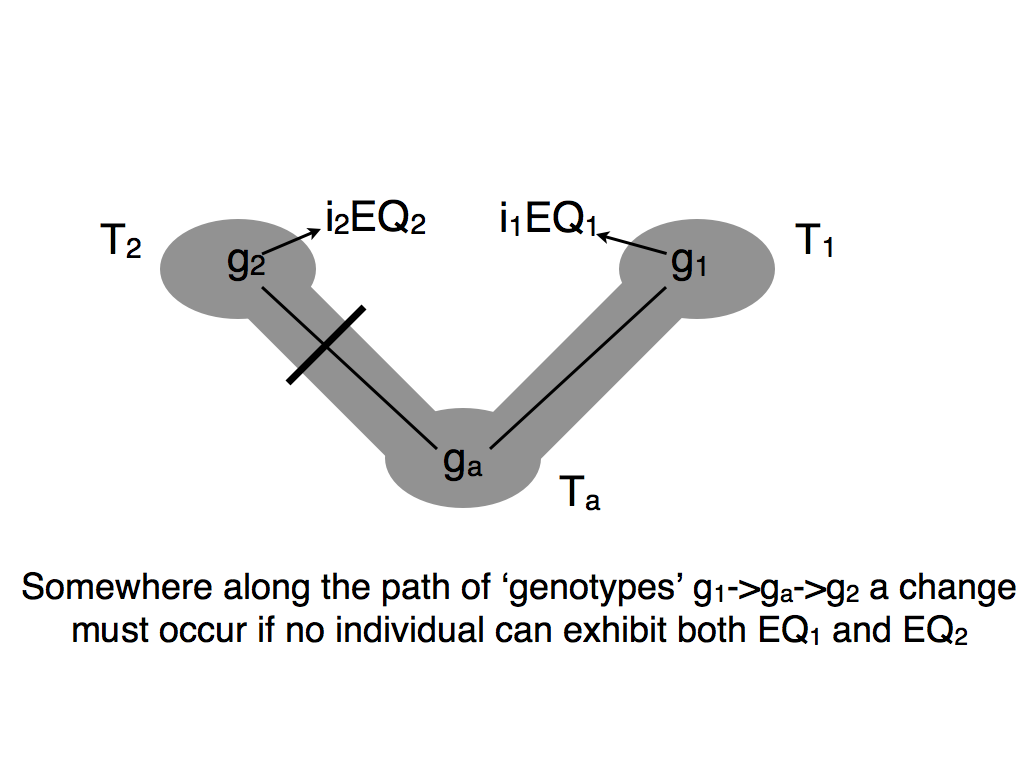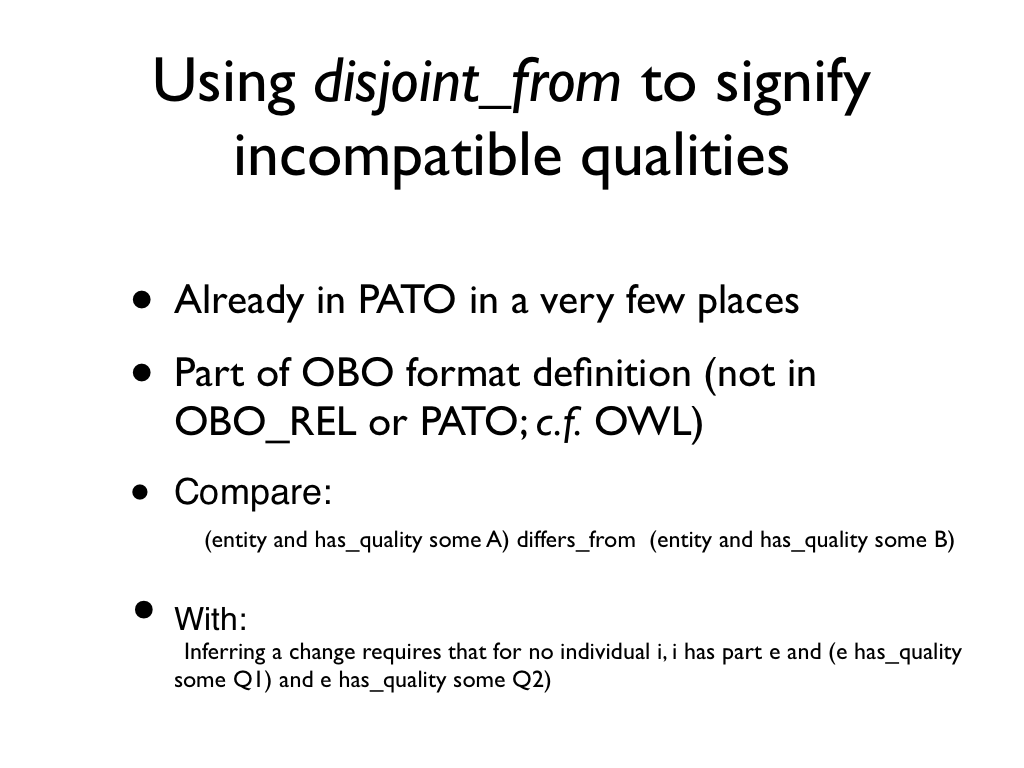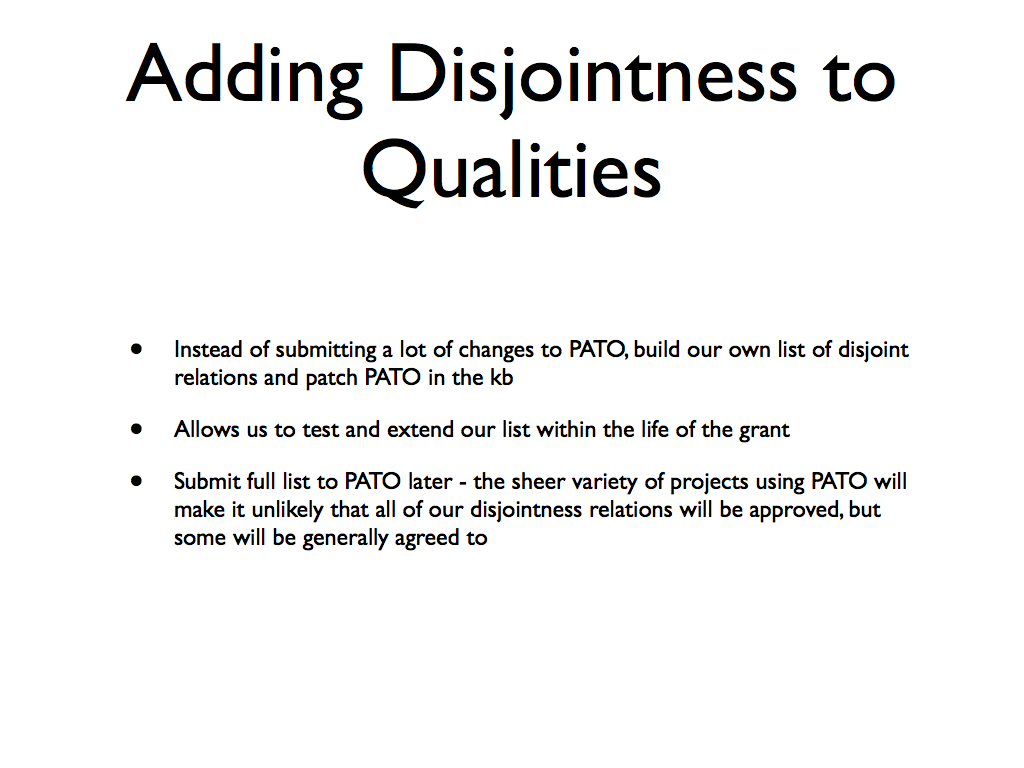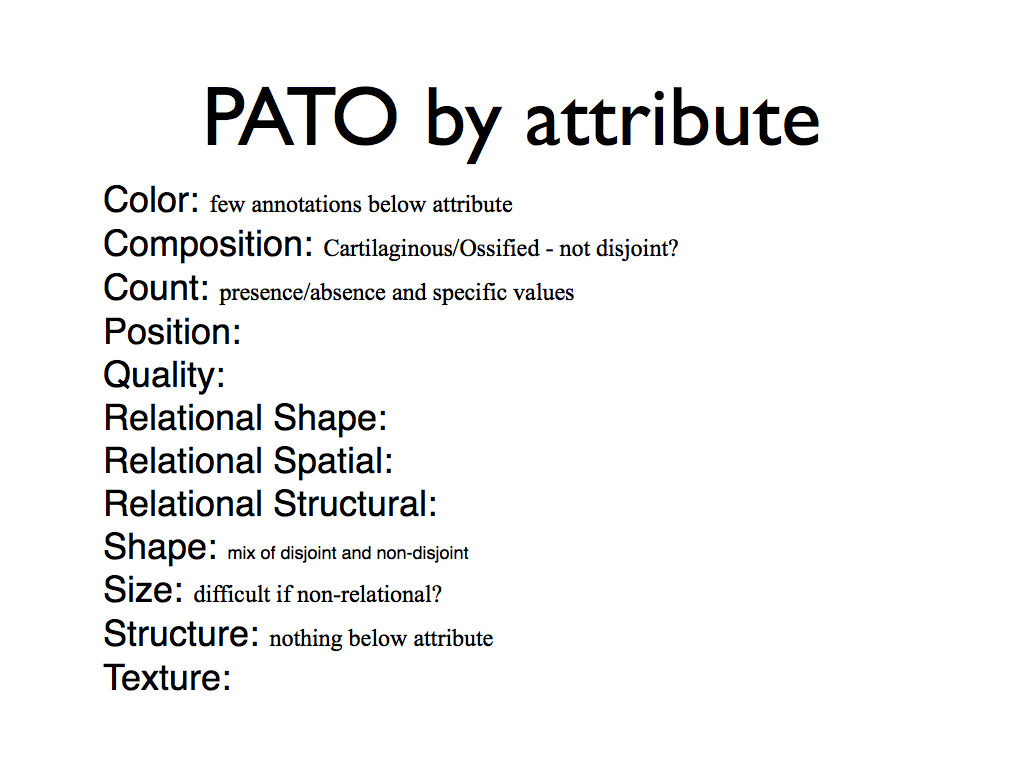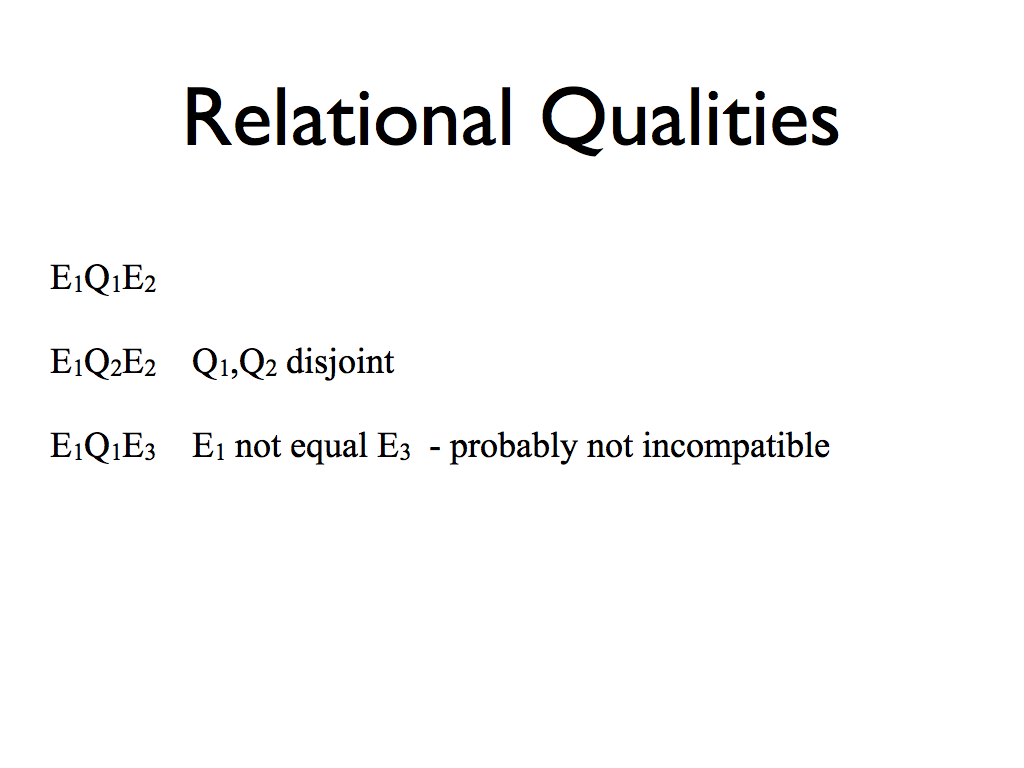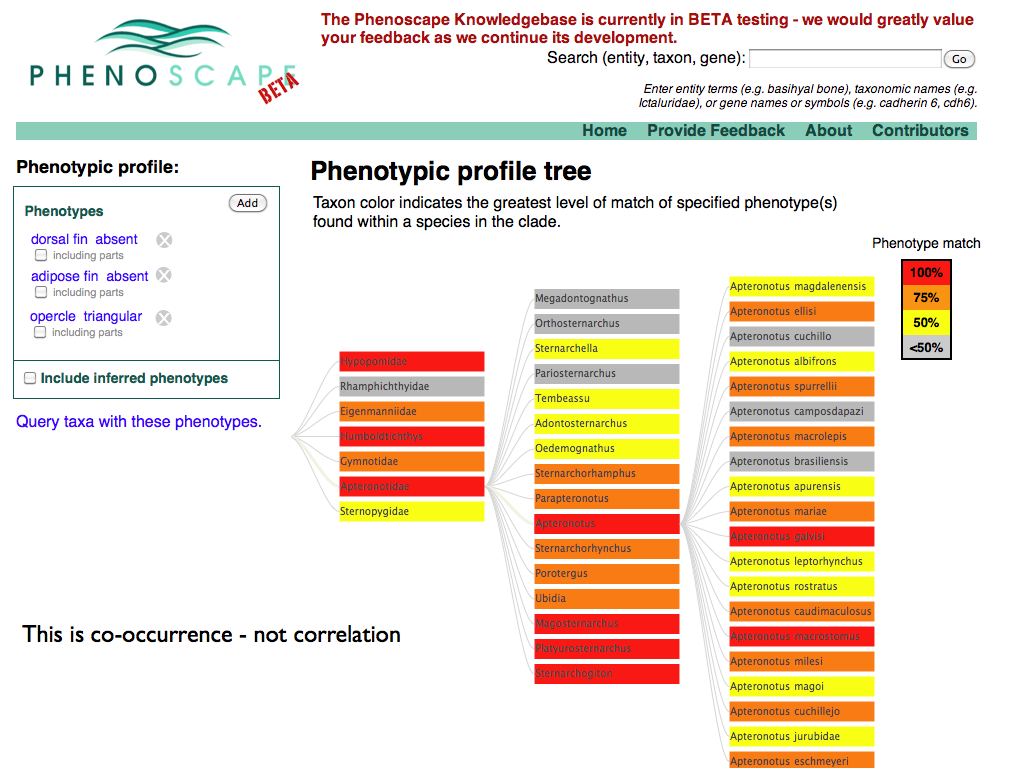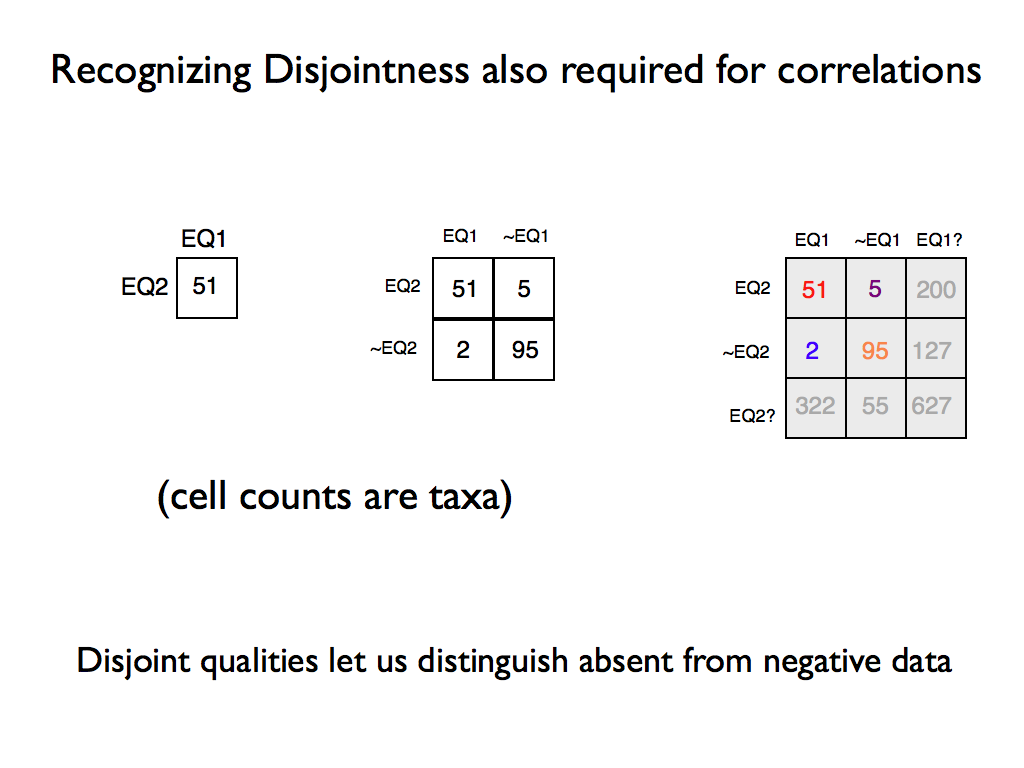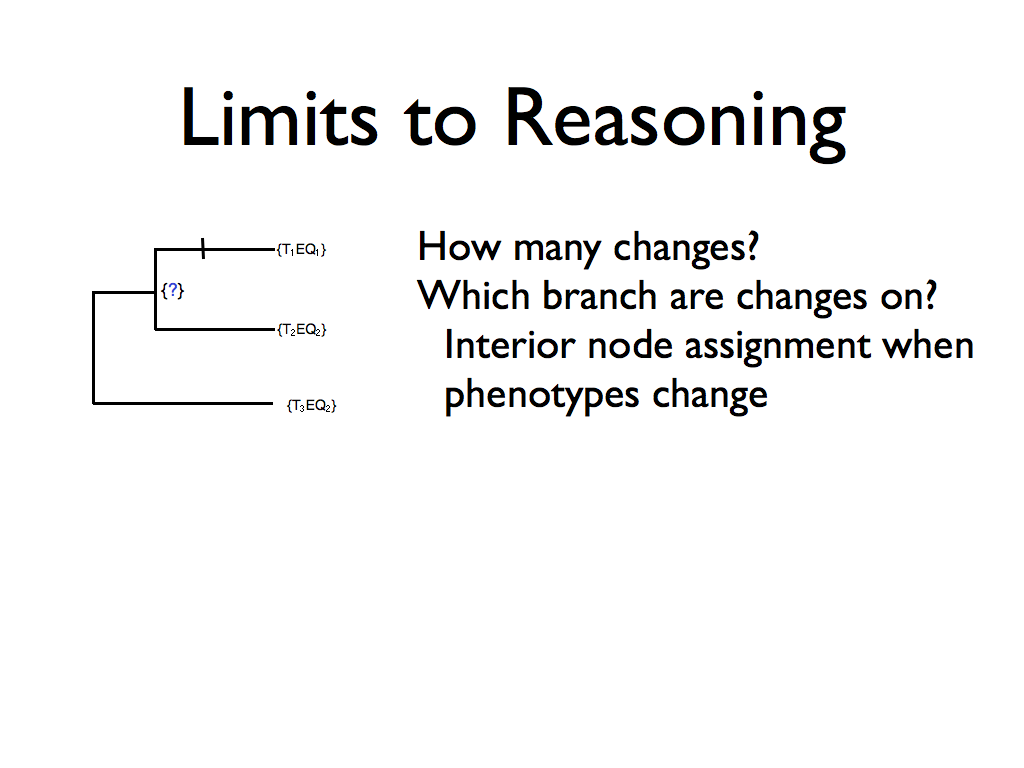Difference between revisions of "Change And Correlation"
(→Version 1) |
(→Notes From Meeting of 30 March) |
||
| Line 63: | Line 63: | ||
Todd asked how these related to the | Todd asked how these related to the | ||
| − | |||
| − | |||
[[Category:User Interface]] | [[Category:User Interface]] | ||
Revision as of 18:15, 31 March 2010
Contents
- 1 Version 1
- 1.1 Slide 1: Intro page
- 1.2 Slide 2: January Tree Display
- 1.3 Slide 3: Current Tree Co-occurance Display
- 1.4 Slide 4: A Phenotype by Taxon matrix we could have had
- 1.5 Slide 5: A tree with negative data and a detected change
- 1.6 Slide 6: A Phenotype by Taxon matrix with negative annotations
- 1.7 Slide 7: Change and Correlation diagrams and overview
- 1.8 Slide 8: Change Detection using incompatible qualities
- 1.9 Slide 9: Change Detection between individuals, using gene-tree species-tree
- 1.10 Slide 10: Disjoint_with and incompatible qualities
- 1.11 Slide 11: Changing PATO
- 1.12 Slide 13: PATO breakdown by attribute
- 1.13 Slide 14: Incompatibility and Relational Qualities
- 1.14 Slide 15: Transition to Correlation
- 1.15 Slide 16: Correlation and Contingency Tables
- 1.16 Slide 17: Reasoning only takes us so far
- 2 Notes from March 30, 2010 meeting
Version 1
Slide 1: Intro page
Slide 2: January Tree Display
Slide 3: Current Tree Co-occurance Display
Slide 4: A Phenotype by Taxon matrix we could have had
Slide 5: A tree with negative data and a detected change
Slide 6: A Phenotype by Taxon matrix with negative annotations
Slide 7: Change and Correlation diagrams and overview
Slide 8: Change Detection using incompatible qualities
Slide 9: Change Detection between individuals, using gene-tree species-tree
Slide 10: Disjoint_with and incompatible qualities
Slide 11: Changing PATO
=== Slide 12: Patching Process Flow ---
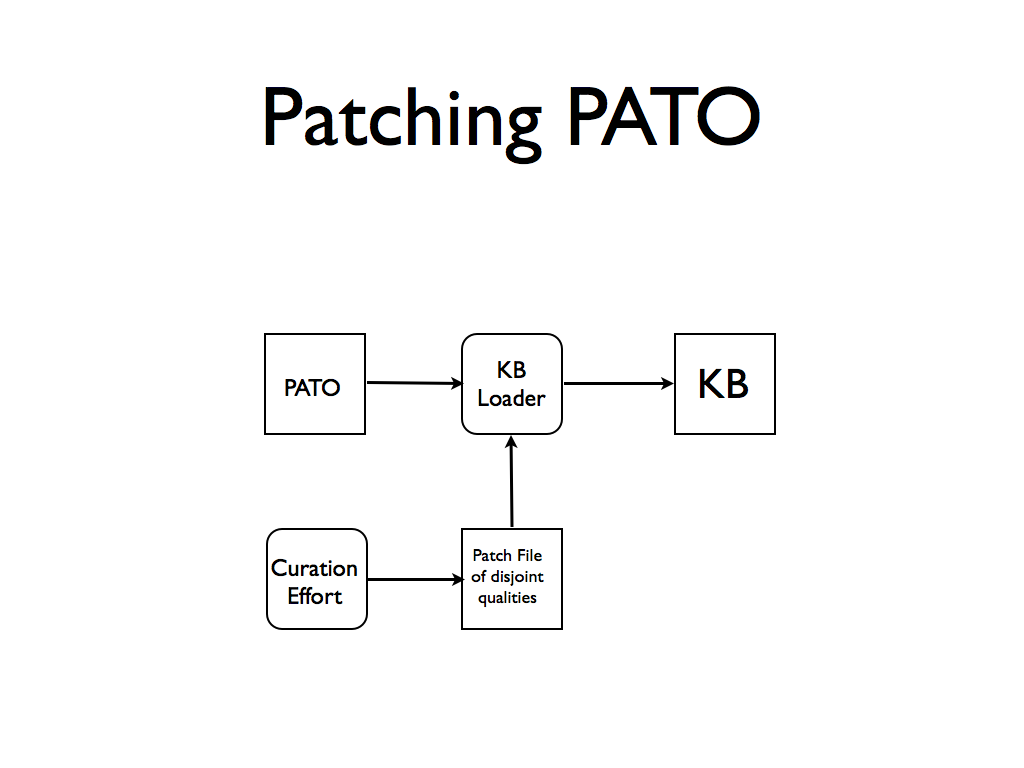
Slide 13: PATO breakdown by attribute
Slide 14: Incompatibility and Relational Qualities
Slide 15: Transition to Correlation
Slide 16: Correlation and Contingency Tables
Slide 17: Reasoning only takes us so far
Notes from March 30, 2010 meeting
Peter presented the preceding slides. There was some discussion of the definition of disjoint, as mentioned on slide 5. OBO's definition refers to classes with no common members (as does OWL's). Paula pointed out that entities related by develops_from may exhibit incompatible qualities. This might be a general problem related to temporal reasoning (entities changing qualities over time).
Todd questioned the need for optimization for the use case of placing a phenotype change on a tree, citing the example of identifying where on a tree a change corresponding to a phenotype of a zebrafish gene mutation. Peter did not have an immediate answer for this.
Todd mentioned liking the current Phenotype Profile interface (taxon tree on slide 3). Todd asked how these related to the
